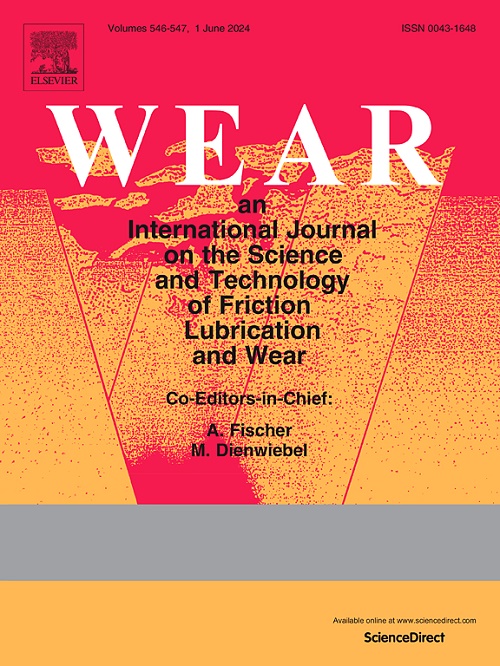Evaluation of polygonization resistance of two wheel steels from full-scale railway wheels and small test discs
IF 5.3
1区 工程技术
Q1 ENGINEERING, MECHANICAL
引用次数: 0
Abstract
Polygonization of railway wheels poses a significant challenge for the wheel-rail system. Despite the evidence from engineering practices highlighting the substantial impact of material factors on the polygonization resistance of railway wheels, research in this field remains limited. This study investigates two types of railway wheels, namely non-alloyed and alloyed wheels, which demonstrate different polygonization resistance under identical operating conditions. It involves microstructural analysis and hardness testing for the matrix materials and plastic deformation layer (PDL) of full-scale wheel, twin-disc testing for wheel steels, followed by analyzing the PDL of test wheel discs. The findings demonstrate that the full-scale wheel and test wheel disc exhibit consistency in terms of polygonization resistance, PDL microstructure, and microhardness, suggesting that the twin-disc test can be employed for material comparison regarding polygonization resistance. In addition, the alloyed wheel was found to exhibit better polygonization resistance at the external region of the wheel rim due to its higher resistance to plastic deformation and wear, while it demonstrates poorer polygonization resistance at the internal region of the wheel rim due to its lower wear resistance. Furthermore, the wave troughs display significant plastic deformation, dynamic recrystallization, and strain hardening near the contact surface, indicating a higher slip ratio at these locations. In contrast, the wave crests predominantly exhibit these characteristics in the subsurface region, indicating that the wave crests experience impact loading.
通过全尺寸铁路车轮和小型测试盘评估两种车轮钢的抗多边形化性能
铁路车轮的多边形化对轮轨系统提出了重大挑战。尽管工程实践证明,材料因素对铁路车轮的抗多边形化性能有很大影响,但这一领域的研究仍然有限。本研究调查了两种类型的铁路车轮,即非合金车轮和合金车轮,它们在相同的运行条件下表现出不同的抗多边形化能力。研究包括对全尺寸车轮的基体材料和塑性变形层(PDL)进行微结构分析和硬度测试,对车轮钢进行双圆盘测试,然后分析测试车轮圆盘的塑性变形层。研究结果表明,全尺寸车轮和测试轮盘在抗多边形化性、PDL 显微结构和显微硬度方面表现出一致性,表明双盘测试可用于抗多边形化性的材料比较。此外,研究还发现,合金轮毂由于具有较高的抗塑性变形和抗磨损能力,因此在轮辋外部区域表现出较好的抗多边形化能力,而在轮辋内部区域,由于其耐磨性较低,因此表现出较差的抗多边形化能力。此外,波谷在接触面附近显示出明显的塑性变形、动态再结晶和应变硬化,表明这些位置的滑移率较高。相比之下,波峰主要在次表层区域表现出这些特征,表明波峰经历了冲击载荷。
本文章由计算机程序翻译,如有差异,请以英文原文为准。
求助全文
约1分钟内获得全文
求助全文
来源期刊

Wear
工程技术-材料科学:综合
CiteScore
8.80
自引率
8.00%
发文量
280
审稿时长
47 days
期刊介绍:
Wear journal is dedicated to the advancement of basic and applied knowledge concerning the nature of wear of materials. Broadly, topics of interest range from development of fundamental understanding of the mechanisms of wear to innovative solutions to practical engineering problems. Authors of experimental studies are expected to comment on the repeatability of the data, and whenever possible, conduct multiple measurements under similar testing conditions. Further, Wear embraces the highest standards of professional ethics, and the detection of matching content, either in written or graphical form, from other publications by the current authors or by others, may result in rejection.
 求助内容:
求助内容: 应助结果提醒方式:
应助结果提醒方式:


